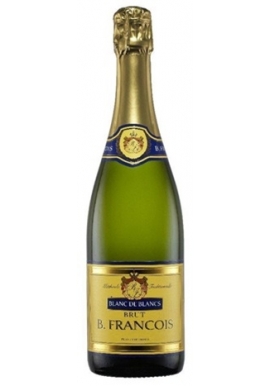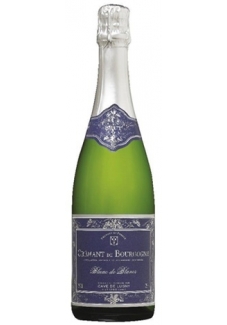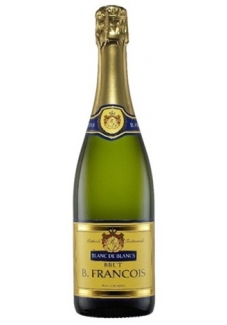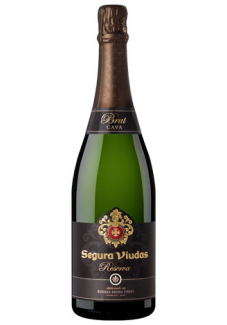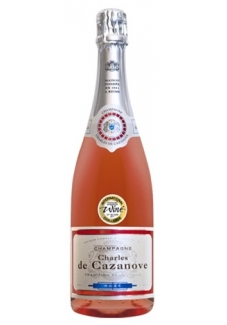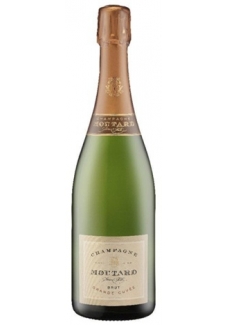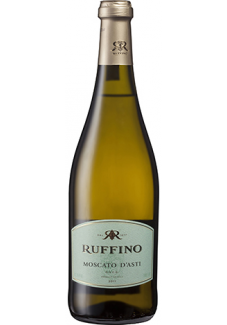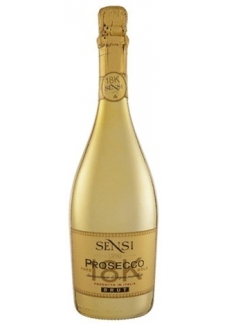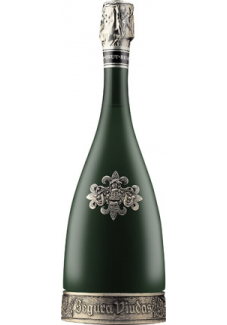IMPORTED SPARKLING
With the increased competition of great value imported sparkling wines from around the world, nothing quite matches the sparkle and sensation of fine bubbles dancing across the tongue. However, not everyone can drink Champagne on a regular basis. So imported sparkling wines of quality become available from the elegant Cava from Penedes in Spain,...
With the increased competition of great value imported sparkling wines from around the world, nothing quite matches the sparkle and sensation of fine bubbles dancing across the tongue. However, not everyone can drink Champagne on a regular basis. So imported sparkling wines of quality become available from the elegant Cava from Penedes in Spain, the rich yet delicate Cremant d’Alsace from France, and the deliciously fresh Prosecco wines of Northern Italy to name a few.
So what is the key element in Imported Sparkling wine making it so popular – well it has to do with the wine which has significant levels of carbon dioxide in it, making it fizzy. The best known example of a sparkling wine is champagne, which is exclusively produced in the Champagne region of France. Also in Italy there are many styles of sparkling wines like Franciacorta, Prosecco. Usually sparkling wine is white or rose but there are examples of red sparkling wines such as the Italian Brachetto, the Italian Bonarda, Australian sparkling Shiraz, and Azerbaijani "Pearl of Azerbaijan" made from Madrasa grapes. The sweetness of sparkling wine can range from very dry "brut" styles to sweeter "doux" varieties (from the French words for 'raw' and 'sweet', respectively).[
The sparkling quality of these wines comes from its carbon dioxide content and may be the result of natural second stage fermentation, either in a bottle, as with the traditional method, in a large tank designed to withstand the pressures involved (as in the Charmat process), or as a result of simple carbon dioxide injection in some cheaper sparkling wines.
In most countries the word "champagne" is reserved only for the specific type of sparkling wine from the Champagne region of France. The French terms "Mousseux" or "Crémant" are used to refer to sparkling wine not made in the Champagne region, such as Blanquette de Limoux produced in Southern France. Imported Sparkling wines are also produced in other regions of France as well as other countries around the world.
These imported sparkling wines are often referred to by their local name or region, such as Espumante from Portugal, Cava from Spain, Franciacorta, Trento DOC,Oltrepo Pavese Metodo Classico and Asti from Italy (the generic Italian term for sparkling wine being Spumante) and Cap Classique from South Africa. Imported Sparkling wines have also been produced in Central and Eastern Europe since the early 19th-century.
"Champagne" was further popularised in the region, late in the century, when Joszef Torley started production in Hungary using French methods, learned as an apprentice in Reims.Torley has since become one of the largest European producers of sparkling wine. The United States is also a significant producer of sparkling wine today, with producers in numerous states. Recently production of sparkling wine have started in the United Kingdom again, after a long hiatus since some of the earliest examples of sparkling wine was produced there.
IMPORTED SPARKLING There are no products in this category
Subcategories
-
Blanc de Blancs
Blanc de Blancs any white wine made from white grapes only. Not an indication of quality but should be of style. Blanc de Blancs is pure Chardonnay.The Sparkling Blanc de Blancs is from the Chardonnay grape only. These are, on release, the lightest and most graceful wines of the lot,but properly aged vintage examples take on a toasty richness that quite belies the lightness argument.
-
Brut Blanc de Blancs
Sparkling Brut Blanc de Blancs is the combination of the Brut element being dry and the Blanc de Blancs white grape, where the Pinot Noir, a black grape is blended which makes 30-70 percent of the blend.
-
Brut
Imported Sparkling Brut wine is labelled Brut which is the standard bone dry style. Although some sugar is added to create the final taste. Even Brut contains some sugar, since undorned sparkling wine is a naturally very acidic wine.
-
Brut Rose
Brut Rose is a blended Sparkling wine which combines the standard bone dry style with its naturally acidic wine with the blend of red wine to bring the Rose element to the forefront sourced from the locale to the white sparkling wine. At their best, rose sparkling wines have a an exhilarating strawberry or raspberry fruit that makes them glorious for summer drinking.
-
Cuvee
Most frequently a blend put together in a process called assemblage. Cuvee is supposed to be the best of a producers production. Most of the big houses make a top drawer special bottling.These are usually - but not always - a vintage wine,produced just to show how good they can really get. Cuvee Sparkling wine are aged for longer than ordinary vintage wine, or come from particularly favoured parcels of vineyard land.
-
Lambrusco
The grapes and the wine originate from four zones in Emilia-Romagna and one in Lombardy, principally around the central provinces of Modena, Parma, Reggio nell'Emilia, and Mantua. The grape has a long winemaking history with archaeological evidence indicating that the Etruscans cultivated the vine. In Roman times, the Lambrusco was highly valued for its productivity and high yields with Cato the Elder stating that produce of two thirds of an acre could make enough wine to fill 300 amphoras.
The most highly rated of its wines are the frothy, frizzante, slightly sparkling red Lambrusco wines that are designed to be drunk young from one of the eight Lambrusco denominazione di origine controllata (DOC) regions: Colli di Parma Lambrusco, Lambrusco Grasparossa di Castelvetro, Lambrusco di Sorbara, Lambrusco Salamino di Santa Croce, Reggiano Lambrusco, Colli di Scandiano e Canossa Lambrusco, Modena Lambrusco, and Lambrusco Mantovano. Throughout the 1970s and 1980s, sweet Lambrusco was the biggest selling import wine in the United States. During that time the wine was also produced in a white and rosé style made by limiting the skin contact with the must
-
Methode Traditionelle
Sparkling wine is a wine (usually white) that becomes carbonated, either through fermentation or by addition of carbon dioxide. The oldest known production of sparkling wine took place in 1531 with the ancestral method. Champagne is the most well-known variant, but there are other variations such as Italian Prosecco and Spumante, Spanish Cava, French Crémant and German Sekt.
Overall, more or less dry white wines are most common among the sparkling wines, but sparkling rosé and red wines are also produced, as well as wines of varying sweetness.
In popular parlance and also in the title of this article the term sparkling is used for all wines that produce bubbles at the surface after opening. Under EU law the term sparkling has a special meaning that does not include all wines that produce bubbles. For this reason the terms fizzy and effervescent are sometimes used to include all bubbly wines.
The following terms are increasingly used to designate different bottle pressures:
Beady is a wine with less than 1 additional bar of pressure.
Semi-sparkling is a wine with 1 to 2.5 additional bars of pressure. Semi-sparkling wines include wines labelled as Frizzante, Spritzig, Pétillant and Pearl.
Sparkling is a wine with above 3 additional bars of pressure. This is the only wine that can be labelled as sparkling under EU law. Sparkling wines include wines labelled as Champagne, Cava, Mousseux, Crémant, Espumoso, Sekt and Spumante.Production methods
Fermentation of sugar into alcohol during winemaking always means that carbon dioxide is released. Carbon dioxide has the property of being very soluble in water (the main constituent of wine), a property that is utilized in sparkling wines. Production always starts from a base wine (where the carbon dioxide from the first fermentation has been gasified). In Champagne production, the base wine is usually a blend of wines from different grape varieties and different wineries, where the distribution gives the final wine its special character, called cuvée.
In some commonly used methods the base wine undergoes a secondary fermentation, which encloses the resulting carbon dioxide under excess pressure and binds it to the liquid in the sparkling wine. In this way the carbon dioxide content is created which, after opening the bottle, produces the bubbles. The dead yeast cells form a precipitate called lees, that often helps with appealing aromas to the sparkling wine but looks unappetizing. The lees is therefore normally removed before the wine is distributed.
The main methods used to make sparkling wines are often given as seven, with some variations. What or which production methods that give the best wines is not a moot point, but there is some consensus that the first four methods, where the second fermentation occurs in the bottle, are usually preferable to the latter three. The following table shows the main features of each method. The methods are then described in the text. It should be noted that within each method there may be variations from one producer to another.
-
Moscato
Moscato d'Asti is a DOCG sparkling white wine produced mainly in the province of Asti, northwest Italy, and in smaller nearby regions in the provinces of Alessandria and Cuneo. The wine is sweet and low in alcohol, and is considered a dessert wine. It is from the Moscato bianco grape. A related wine, Asti, is produced in the same area from the same grape.
Grown in the hilltop town of Asti in Montferrat, Piedmont, Italy, Moscato d’Asti is made by small producers in small batches. Moscato is named such because of its earthy musk aroma. The ancient Romans called it the apiana. In the Medieval ages, its diffusion was great and the first certain documents that attest to its presence in Piedmont date as far back as the 14th century.
Piedmont winemakers traditionally make this low alcohol wine with Muscat à Petits Grains, also known as Moscato bianco. This petite berry varietal ripens early and produces a wide range of wine styles: light and dry, slightly sweet and sparkling or a rich, honey-like dessert wine.
Cultivated for hundreds of years in the Piedmont DOCG in Italy, Moscato bianco is considered one of the oldest grapes grown in that area. Although Moscato has been cultivated and made in the area, modern production of Moscato d’Asti as it is known now began in the 1870s. Made in the frizzante style, Moscato d'Asti was the wine that winemakers made for themselves. This low-alcohol wine could be drunk at noontime meals and would not slow down the winemaker or his workers. After the workday was done, the Piemontese tradition of long, multicourse evening meals gave Moscato d'Asti the purpose of a digestif that cleansed the palate and stimulated the palate for dessert.
The cooler region in which Moscato bianco is grown and produced has an optimal blend of limestone and sandstone soil that allows for adequate hydration and brings out the flavor of the grapes. The grapes are harvested when the brix is optimal and then crushed. The must is chilled almost to the point of freezing to halt the fermentation process. By law, Moscato D’Asti can only contain 5.5% abv so the fermentation process is halted leaving much of the natural sugars remaining in the wine. Unlike Champagne, there is no secondary fermentation allowed in the bottle. Right before bottling, the Moscato d’Asti goes through a filtration process that leaves the wine with a translucent golden color.
-
Prosecco
Prosecco di Conegliano/di Valdobbiadene - named after its principal grape. Prosecco can still be a dry grape white, but its more celebrated manifestation is a sparkler, using the Charmay method in which the second fermentation is induced in a large tank before bottling. Once useful mainly for the mixing with peach juice to make the famous Bellini cocktail, Prosecco has now come up in the world, with more complex, elegant wines, in many cases rivalling Spanish cava. Well noted producers: Carpene Mavolti, Bisol and Adami to name a few greats
-
Reserve
Imported Sparkling Reserve wine, is wine of a higher quality than usual, or a sparkling wine that has been aged before being sold, or both. Traditionally winemakers would "reserve" some of their best wine rather than sell it immediately, coining the term.
In some countries the use of the term reserve/reserva/riserva is regulated, but in many places it is not. Sometimes, Sparkling reserve wine originates from the best vineyards, or the best barrels, making it more special. Additionally, Sparkling reserve wines might be made in a style suited to longer aging periods. However, in regions where the use is not regulated the mere presence of the term "reserve" on a wine label may be nothing but a marketing strategy.
In similarity to the term "old vines," "reserve" is meant to indicate a sparkling wine that is special, or at least different in flavor or aging potential. In general, the more reputable the producer, the more likely the term "reserve" has a genuine meaning. Similarly, the presence of a non-reserve or "regular" bottling with a producer that also sells reserve wine makes it more likely that there is something unique inside. Partly because of the often vague meaning of "reserve," many wineries produce named cuvées instead. Typically these are sparkling reserve wines in the genuine meaning of the word.
In Portugal and Spain, reserva is a regulated term controlled by law, at least ensuring that sparkling reserve wines get some additional ageing. In practice it is very difficult to regulate quality, so the term primarily deals with ageing and alcoholic strength. In Portuguese and Spanish wines, the requirements varies between regions, but typically, when used on a label "Reserva" means that the wine was aged for at least three years in the cask and bottle, at least one of which must have been in the cask.Those that have been aged for five years or more are labelled Gran Reserva.Gran Reservas are intended to be made only in exceptional vintages, but this is up to the producer.
In Portugal the term indicates that the wine has an alcohol level of at least 0.5 percent above the regional minimum, and that it was made from a rated vintage.
Austrian DACs
In the Austrian Districtus Austriae Controllatus (DAC) system, most DACs have an additional Reserve designation for a wine which has slightly more strict requirements.German Cabinet
Before the 1971 German wine law, a term corresponding to reserve wine existed in kabinett, sometimes written as Kabinettwein. In 1971, the similar-sounding term Kabinett was instead introduced as the lowest level of the Prädikatswein category, i.e., with a completely different meaning. Therefore, in the present German wine classification no legally defined term corresponding to reserve wine exists. -
Rose
The word "rose" has moved into the English language. Pink was too undignified a word for wine. Rose is simply French for rose-coloured. Its similarity to arrose, which means watered, is quite coincidental.
It is useful to have a sparkling wine which you can fall back on at any time, which is good as a drink on its own, or good for a glass with lunch, good for sipping as you cook or good for supper in the garden. No wine has a monopoly of these qualities; many fine German Sparkling wines, for example, would be good for any of these things, or with practically any dish. But German Sparkling wine is expensive, and not so very simple. Sparkling Rose is great value for money, has no long pedigree, needs no special serving—is in fact, the all-purpose sparkling wine for thirsty people.Sparkling Rose has, besides, the prettiest range of colours of any Sparkling wine. Colour is not everything, by a long way, but a really glowing coral glass, a cherry-coloured one or one with a touch of tangerine about it fairly beckons you in. The Sparkling wine-makers themselves have toyed with the poetic in their words for the pinkness of their wares—oeil de perdrix, partridge-eye, is one the lipstick people might try. Pelure d'oignon, onion-skin, would probably go less well.
There is no great range of tastes and scents among Sparkling rose wines. It is the connoisseur's—many, unjustly, would say snob's—argument against them. The grower making a Sparkling rose is not following, as more serious wine-makers do, the specific practice of his region to bring out the regional character and make a Sparkling wine which could be recognized anywhere. Character is considered expendable for pink wine. What the maker is after is the simple taste of a Sparkling wine; the lowest common denominator (or, if you like, the highest common factor) of all Sparkling wine.
Wine Makers will make it sweeter or drier, still or a little sparkling, to suit your fancy, but Wine Makers art touches that of the confectioner rather than the ancient skills of making wine. The colour comes, as does the colour of red wine, from the skins of black grapes. For rose fewer skins are left in the fermenting wine for less long—the length of time depending on the colour and richness of flavour the maker wants. No doubt there are those who make it by mixing red and white wine, or even putting cochineal in white, but they work by night if they do.
Italian Sparkling roses, which are in the main more like light reds, have more character than some French ones. Portuguese Sparkling roses are usually shocking pink with titillating little bubbles. But basically the same, essential, appealing wine is there behind the frills and frou-frou. It is the Sparkling wine for lunches, picnics, kitchen-parties.
ABN: 11 806 263 393
Liquor Licenses
337 526 06
360 674 16
